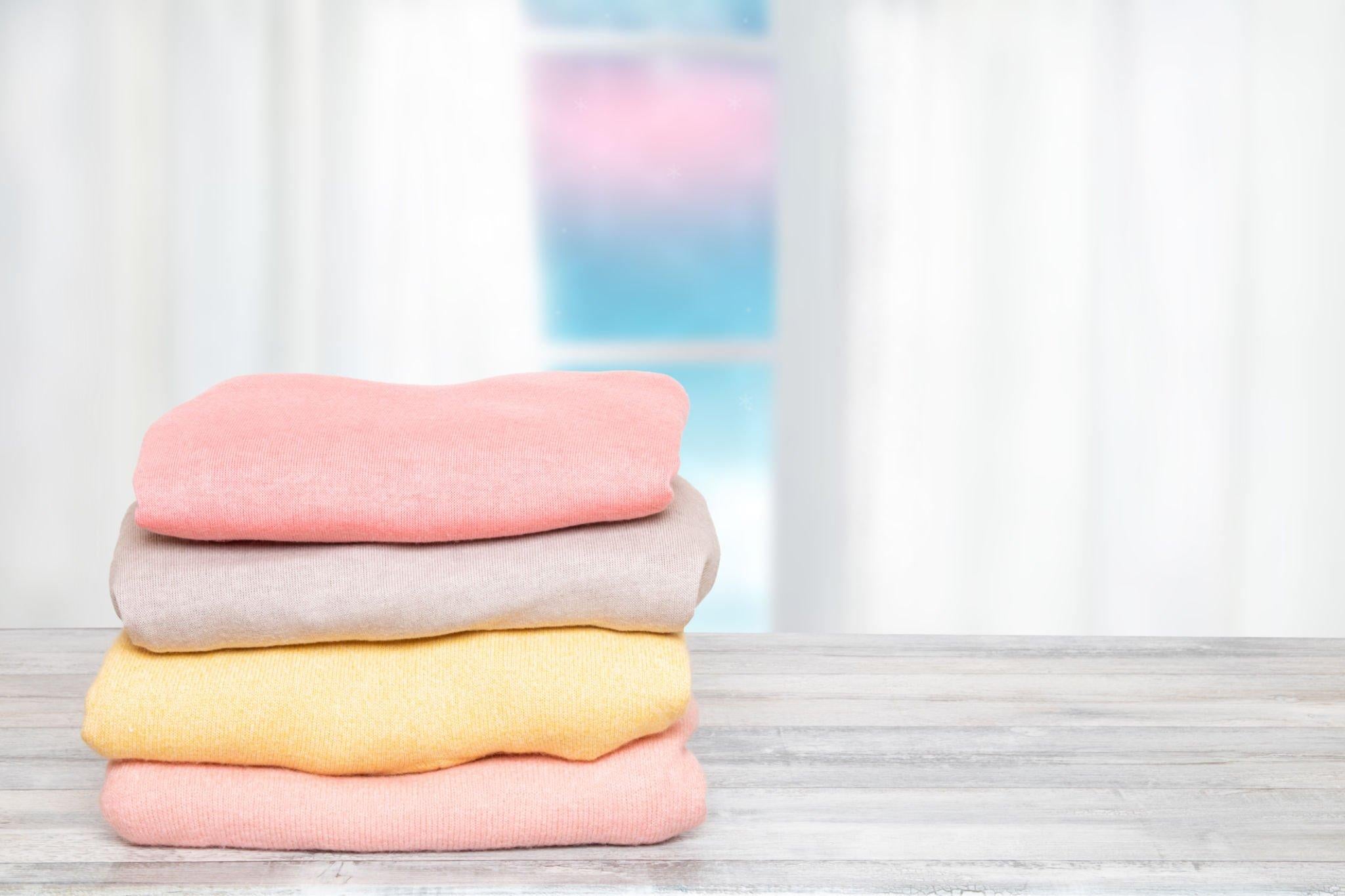After a long off-season, you reach for your beloved cashmere sweater or treasured pashmina shawl, ready to feel the luxurious softness against your skin. But alas, your heart sinks as you discover holes and fraying ends. Yes, the clothes moths have had a feast on your precious cashmere.
Natural fibers like cashmere or pashmina are the ideal nesting place for moth eggs. From egg-laying to the destructive larval stage, these moths can damage your prized cashmere clothing beyond recovery, leaving an unfortunate mess for you to clean up.
This is the harsh reality of a moth infestation, a common and frustrating issue for many people who have lost their favorite piece of cashmere clothing.
Here's how to protect your cherished cashmere from the onslaught of these destructive pests.
1. Always Clean Before Storage
A moth infestation thrives on neglect. Food particles, skin cells, and natural oils on your cashmere clothes are a moth's dream meal. This is why proper cleaning of your cashmere clothing before storage is the first step in protecting your cashmere from moths.
We recommend hand washing for cleaning cashmere clothes. Using a mild detergent (or baby shampoo) and cold water, gently wash your garment to remove the stains. Be sure to rinse thoroughly and let the garment air dry completely before storing.
If your clothing has collected a lot of dirt and has persistent stains, dry cleaning might be necessary. Make sure to only dry clean from a professional who has experience dealing with these soft fabric. Most solvents can deter moths but not all of them are suitable for a fabric like cashmere.
2. Store in a Clean and Airy Place
For both short-term (this season) and long-term (next season) storage, always fold your cashmere, keep it away from sunlight, and store in a dry, well-ventilated spot.
For long-term storage, you need to take a few extra steps.
Never mix your everyday cashmere with items for long-term storage. You wouldn’t want to transfer any dirt or bacteria onto your clean clothes.
Also, for long-term storage, think about layering your cashmere with cloth separators. This helps reduce tension on the fibers and prevents damage.
You can also store your cashmere in knitwear bags. They let your cloths breathe, don't trap heat or moisture and protect against moths. Just don't overstuff them - aim for 2-3 items per bag.
Plastic or vacuum bags might be easy to find but they aren't good for cashmere. Plastic bags trap heat and moisture and can harm clothing and attract moths while vacuum bags put too much pressure on cashmere which could cause damage.
3. Use Natural Deterrents
There are also natural deterrents that can repel moths.
- Cedarwood: The scent repels moths. Use cedar blocks or balls in your storage areas.
- Lavender: Moths dislike lavender. A bundle of dried lavender in your wardrobe also freshens air.
- Moth Traps: These are effective for both moth prevention and cure. It might be useful, especially if you live in areas with frequent moth infestation.
Traditionally, we've also seen the people in the Himalayas use various aromatic herbs that naturally repel insects. Some specific examples include:
- Neem leaves
- Camphor balls
- Cloves, Cinnamon, and Cedar sachets
Be aware that these repellents are generally used as a preventive measure rather than a treatment for an existing infestation.
4. Regularly check and clean
A key aspect of preventing moth damage is regular checks and cleaning. This is especially important for garments that are not frequently worn, as they are the most vulnerable to moth damage.
Inspect your cashmere items on a regular basis, looking out for signs of moths such as tiny holes, a musty smell, or visible larvae or eggs. Regularly airing out and shaking these items can also help disrupt any moth lifecycle that may have started.
In addition, keep your storage areas clean. Moths are attracted to dust and dirt, so regular cleaning of your wardrobes and drawers can make them less attractive to these pests. If you find any signs of moths, take immediate action by cleaning the affected area thoroughly and treating the infestation.
Remember, prevention is better than cure. By taking these steps, you can protect your precious cashmere items from the destructive appetite of moths and enjoy them for many years to come.
What to Do If You Find Moths in Your Cashmere?
If you find yourself with a moth infestation, it's important to act swiftly to minimize damage. Here are the steps you should take:
- Identify the infestation: Look for common signs of moth damage. Small holes in your garments, webbing, larvae, and a musty smell are all telltale signs.
- Clean affected items: It's essential to clean any items showing signs of moth activity. Check the care instructions.cConsider dry cleaning, hand washing, or freezing the garment in a sealed bag for a day. This will kill any moth eggs or larvae. Be sure the item is completely dry before storing it again.
- Clean the storage area: Vacuum and wash the storage area thoroughly to remove any eggs or larvae. Be sure to clean in corners and crevices where eggs might be hidden. Consider using a natural repellent like lavender or cedar oil as part of your cleaning routine to deter moths in the future.
- Monitor your traps: If you're using moth traps or deterrents, be sure to check and replace them regularly. These can be effective, but they need to be maintained to keep working.
What to Do If You Have Holes in Your Cashmere?
Despite the best prevention methods, moths may occasionally breach your defenses. Do not despair; your cashmere pieces are far from lost.
- Re-weaving, or invisible mending, is a technique where the repair is blended seamlessly with the original fabric. Threads are borrowed from the seam or hidden parts of the piece to mend the holes, making the damage virtually undetectable.
- Darning is another method that works well for smaller holes. It involves using needle and thread to replicate the structure of the fabric, creating a patch that fills in the damaged area.
- Felting is a technique typically used for more substantial damages. It involves attaching a piece of the same or similar fabric to cover the hole, which is then felted to blend in with the existing fabric.
Remember, the longer a hole remains, the more it risks enlarging or forming a run, especially in handwoven or knitted pieces.


